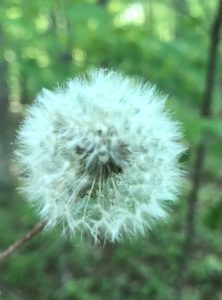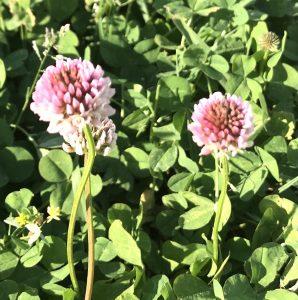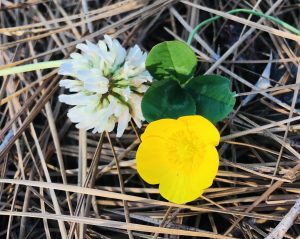 Our world has changed tremendously over the last seventy plus years with more toxins in our environment that I care to speak about. When I sat down to write this article, I was perplexed in where to begin. There are so many environmentally unfriendly exposures that many of us may not be aware of. I’ll begin with a quick look at my childhood where my first ten years were spent east of the Roanoke River. Many days, I would catch a glimpse of the black ash fallout that would delicately float down onto the purple morning glories that climbed our fence. Even at this young age, I knew this wasn’t normal. Luckily, we moved 20 minutes north where the papermill soot was nowhere to be found but we did wonder why 30-year old neighbors had random cases of lung cancer and never smoked. Also, why cancerous tumors usually seen in elderly were being diagnosed in youth. Was there a connection?
Our world has changed tremendously over the last seventy plus years with more toxins in our environment that I care to speak about. When I sat down to write this article, I was perplexed in where to begin. There are so many environmentally unfriendly exposures that many of us may not be aware of. I’ll begin with a quick look at my childhood where my first ten years were spent east of the Roanoke River. Many days, I would catch a glimpse of the black ash fallout that would delicately float down onto the purple morning glories that climbed our fence. Even at this young age, I knew this wasn’t normal. Luckily, we moved 20 minutes north where the papermill soot was nowhere to be found but we did wonder why 30-year old neighbors had random cases of lung cancer and never smoked. Also, why cancerous tumors usually seen in elderly were being diagnosed in youth. Was there a connection?
Now we know so much more. The human body has done a great job of evolving efficiently until the last several decades. If I consider what my 98-year old grandfather has witnessed, it almost seems unreal. It’s a far cry from drinking raw milk fresh from the cow, farming food in nutrient-rich soil to riding a horse and buggy for transportation. Today’s world of soil depletion, electromagnetic fields, food additives and chemical exposures must seem overwhelming and it is! Humans live a long time and our bodies need time to evolve. If we were insects with a short life span, we might be able to keep up. While our bodies have natural detoxification systems built in such as the liver that filters harmful substances, we weren’t built for theses modern day exposures that create an overburdened liver.
This topic is near and dear to me. I spent a year writing a dissertation and unraveled a web of connections and literature revealing the astonishing impact of varied exposures on health and well-being. While I had 80 pages to explain the details, for the sake of this blog, I really need to condense my thoughts. I’ll provide some statistics, highlight some potential daily contacts and provide a couple of favorite techniques I’ve come to find extremely useful.
literature revealing the astonishing impact of varied exposures on health and well-being. While I had 80 pages to explain the details, for the sake of this blog, I really need to condense my thoughts. I’ll provide some statistics, highlight some potential daily contacts and provide a couple of favorite techniques I’ve come to find extremely useful.
Did you know that more than 80,000 chemicals have been introduced into our world over the last 120 years and only ~550 have been tested for safety? Basically, we have no idea of their impact on human health. Not all countries are the same. Europe has banned or restricted more than 1,300 chemicals while the United States has outlawed less than a dozen. It’s a little frustrating, but knowledge is power. Based on what you learn in this article, you can protect yourself and those you love.
Everything is connected and just as our genes are passed down to our offspring, so are exposures. By the way, our genes load the gun but the environment pulls the trigger. This means our genes are not our destiny! Did you know that the Environmental Working Group (EWG) examined umbilical cord blood of babies as they entered this world and found 287 industrial chemicals present? These chemicals included pesticides, dioxins, phthalates, flame-retardants, Teflon and even toxic metals including mercury. Wow! This doesn’t include many of the common additives and substances found in foods and home products.
Let's consider as kids grow up, many times they are exposed to additives and food coloring found in popular juices and boxed pasta (adults too)! These dyes and chemicals were taken off the market in the U.K. due to potential harm and concern over attention/behavior issues in kids. The rest of Europe is required to provide a warning label. What's even more interesting is that sports drinks that contain dyes in the U.S. are altered in other countries with paprika for coloring to ensure its citizens are not in harm’s way. Remember this the next time you read a label.
 Let’s dive into more specifics. It’s not only food, but also the water that we drink and bathe in (what we apply to the skin, including water, is transported into our cells). From artificially fluoridated water (too much fluoride interferes with thyroid hormone production) to the runoff of fertilizers or pesticides finding our water supply, we’re exposed. There’s also antibiotics in our lakes, rivers and streams that make their way into the aquifers beneath the ground’s surface. These harmful substances can make their way into our homes. That’s why it’s critical to know this information so you can make informed decisions for yourself and loved ones.
Let’s dive into more specifics. It’s not only food, but also the water that we drink and bathe in (what we apply to the skin, including water, is transported into our cells). From artificially fluoridated water (too much fluoride interferes with thyroid hormone production) to the runoff of fertilizers or pesticides finding our water supply, we’re exposed. There’s also antibiotics in our lakes, rivers and streams that make their way into the aquifers beneath the ground’s surface. These harmful substances can make their way into our homes. That’s why it’s critical to know this information so you can make informed decisions for yourself and loved ones.
There’s so much more to the story but I’ll bullet point some of these.
- The average adult uses ~9 products containing over 120 individual ingredients a day. There are also twelve toxins that the EWG found that should be avoided.
- Personal care products can be found everywhere from deodorant, toothpaste, soap, shampoo, lotion and more. Check your products and make sure they don’t contain any harmful substances that can leach through the skin into your cells.
- To lengthen the shelf-life of products, preservatives are used that contain cytotoxins that are designed to kill cells, prevent bacteria growth and fungi. Unfortunately, they are harmful to human skin.
- Most clothes contain polyester, nylon, acrylic and acetate. Many are wrinkle-free, stain resistant and even insect repellent. Several health hazards have been linked with the wearing of toxic fibers and fabrics. Safe options are cotton, wool, cashmere, hemp, linen, silk. Look for organic. Here are some details.
- Perfluorochemicals, PFCs, are in fabrics that are “resistant” and accumulate in the body.
- Toxins released from rayon can cause tissue death and are associated with Parkinson’s disease.
- Polyester is made from esters of dihydric alcohol and terpthalic acid and are toxic.
- Acrylic is a fiber manufactured with a combination of toxic substances.
- Nylon is petroleum based and receives chemical treatments containing sulfuric acid and formaldehyde and also bleach and chloroform, limonene, pentene and terpineol. Health conditions include skin rashes/allergies, dizziness, headaches, nervous system issues.
- Teflon (yes, Teflon which is also used in non-stick pans) is made of PFCs and are added to fabrics for durability, wrinkle and stain resistance. Did you know that it’s advised to keep pet birds out of the kitchen because of Teflon exposure? The fumes from Teflon can lead to suffocation. They are literally the canary in the coal mine (kitchen).
- Aluminum has a cumulative effect in the body. It's used in buffered aspirin and antacids among other things such as aluminum foil, lining in cans and additives in processed foods. See this article on heavy metals.
- Dental amalgams are 50% mercury and are tooth filling materials for cavities. Mercury is a heavy metal is associated with negative impacts of the human nervous system. Just think of the Mad Hatter in Alice in Wonderland! Please note I’m not suggesting you go out and have all your fillings removed. I’m simply providing information. If you have amalgams removed, you need to see an experienced biological dentist to ensure you aren’t exposed to more mercury on the removal!
- Plastics are everywhere. They consist of synthetic and semi-synthetic solids. This includes nylons, polycarbonates and polystyrene (Styrofoam). Avoid storing and heating foods in plastic and avoid plastic water bottles and storage items that contain BPA. BPA is an endocrine disruptor.
There is so much more to consider in our environments from paints, substances in furniture, flame retardants, light bulb recycling, cookware, food exposure and indoor air quality. For products, I like using the Think Dirty app to check safety. It’s free and easy to use. I also use the Environmental Working Group (EWG) website to learn the latest information. You can also check out these links - flame retardants, formaldehyde, compact fluorescent light bulbs, recycling and disposing mercury bulbs.
light bulb recycling, cookware, food exposure and indoor air quality. For products, I like using the Think Dirty app to check safety. It’s free and easy to use. I also use the Environmental Working Group (EWG) website to learn the latest information. You can also check out these links - flame retardants, formaldehyde, compact fluorescent light bulbs, recycling and disposing mercury bulbs.
Lastly, cleaning is a big consideration so I can't dismiss this topic. Here’s the biochemist in me coming out...beware of combining certain chemicals! They can cause harmful fumes and/or other chemical reactions when mixed with other products. We know a neighbor who mixed up varied chemicals and ended up in the hospital.
- Bleach + Acid – cleaning products often contain hydrochloric acid. When mixed with bleach, it can create chlorine gas...a highly toxic substance.
- Bleach + Alcohol – mixing these two chemicals together creates chloroform. This is toxic.
- Ammonia + Bleach – this blend produces chloramine/chlorine gas. These vapors are toxic.
Great cleaning products to use in your home can include the following and also check out the easy recipes.
- Castile soap – natural degreaser
- White distilled vinegar – dissolves soap scum, cleans glass and disinfects
- Lemon juice – mild bleaching
- Borax – softens water and removes odor
- Baking soda – dissolves dirt and soap scum
- Club soda – removes stains
- All-purpose cleaner – one quart of warm water and 4 to 5 tablespoons of baking soda and 1 teaspoon of vinegar
- Window cleaner – 4 cups of water, ¼ cup of white vinegar, 1 ½ tablespoons of lemon juice
- Mildew and disinfectant cleaner – 2 cups water, 1/8 cup tea tree oil, 1/8 cup of lavender or lemon essential oil
Now the good stuff! During my na turopathic training, we learned a great deal regarding the elimination and detoxification systems the body has in place. It primarily involves the kidneys and liver, but the lungs (specifically breathing) is another way to cleanse the body and the blood. Drink lots of quality water to ensure the kidneys are flushing toxins and you're providing hydration for deep breathing. There’s also sweating which removes toxins from the largest organ in our body, the skin. Make sure you drink at least 1/2 your body weight in ounces/daily. I want to share a couple of methods that can help your body release exposures efficiently. Remember, everything we consume, including medications, the air we breathe, what we wear and absorb is processed by the body.
turopathic training, we learned a great deal regarding the elimination and detoxification systems the body has in place. It primarily involves the kidneys and liver, but the lungs (specifically breathing) is another way to cleanse the body and the blood. Drink lots of quality water to ensure the kidneys are flushing toxins and you're providing hydration for deep breathing. There’s also sweating which removes toxins from the largest organ in our body, the skin. Make sure you drink at least 1/2 your body weight in ounces/daily. I want to share a couple of methods that can help your body release exposures efficiently. Remember, everything we consume, including medications, the air we breathe, what we wear and absorb is processed by the body.
Methods to Reduce Exposure
Castor Oil Pack - One of my favorite ways to assist the liver! It’s not what you might think. There’s no ingestion for this method. It may sound daunting, but it’s not. As far as track records, the Ebers Papyrus (ancient medical document) has mention that castor oil was used topically in early Egypt 1550 B.C.
What you’ll need* and what you might like to know.
-
- Organic, cold-pressed castor oil*
- Heating pad or hot water bottle*
- White wool cloth (you can use cotton – hand towel size)*
- Large bowl (you can add your castor oil and cloth in this bowl for easy use)
- Parchment paper
- Clothes and towel you don’t care about because the oil stains
- Quiet space to invoke calm
- Note: some places sell the entire kit so you don’t have to purchase individually
How to utilize
-
- In a bowl, pour castor oil over cloth until saturated. Have a seat with all your items so you don’t have to get
 up. If it’s chilly in the house, you may want a blanket as well to cover up with after you get your heating pad organized.
up. If it’s chilly in the house, you may want a blanket as well to cover up with after you get your heating pad organized. - On the right side of the abdomen (bottom front portion of ribs to hip bone), place saturated castor oil cloth directly on skin (oil-side down). Put parchment paper (doubled for thickness) over cloth and then place heating pad (medium-heat) or hot water bottle over parchment paper. This way you keep your heating pad free of oil. You can use a thin towel between parchment paper and heating pad to make sure your heating pad doesn’t get oily.
- Relax…..20 – 30 minutes if you’re new to this or up to one hour if you’re accustomed to this modality.
- You can do this daily and between uses, store your oil-soaked cloth inside a glass container in the refrigerator. The cloth can be used a dozen times before washing it in a chemical-free soap. Just ensure to add more castor oil each time you use it.
- In a bowl, pour castor oil over cloth until saturated. Have a seat with all your items so you don’t have to get
The beauty of this technique is that there are no concerning detoxing symptoms but as with any new method, start slow. If you have any concerns, discuss with your health care provider to ensure this is right for you.
Epsom Salt/Magnesium Soaks
- Foot Bath – take ¼ cup of magnesium oil or ¼ to ½ cup of Epsom salt and add to warm-hot water in foot basin and add feet! Soak for 20-25 minutes and relax. The feet are a great outlet to release toxins. Add a few drops of your favorite essential oil if you’d like.
- Body Bath – take 1 cup of Epsom salt and mix 15 drops of Lavender essential oil to the salt. Run warm-hot bath and add the soaked salt to bath. This way the essential oil is attached to the salt. If you drop oil directly into bath water, it will evaporate quicker. Stay in bath between 20-25 minutes to soak up the magnesium and help you body sweat out the toxins.
 Lots of things we’re exposed to these days can impact our endocrine systems causing thyroid imbalances, estrogen dominance, autoimmune concerns among other health concerns. In the last year, I’ve worked with case study clients during school who had many of these disruptions and I'm pleased to say their vitality has been completely restored. Awareness, education and implementation of healthy lifestyle choices are keys to a happy, healthy life. I’m not trying to create fear but want people to be informed. We are the architect of our own health. Build it well, clear out the clutter and live life fully!
Lots of things we’re exposed to these days can impact our endocrine systems causing thyroid imbalances, estrogen dominance, autoimmune concerns among other health concerns. In the last year, I’ve worked with case study clients during school who had many of these disruptions and I'm pleased to say their vitality has been completely restored. Awareness, education and implementation of healthy lifestyle choices are keys to a happy, healthy life. I’m not trying to create fear but want people to be informed. We are the architect of our own health. Build it well, clear out the clutter and live life fully!
Additional resources include - Food for Natural Detox, Lifestyle Habits for Healthy Detox and the Best Way to Hydrate. Check out these links to learn more about food sources, household cleaners, consumer products, sunscreen and healthy living tips.
